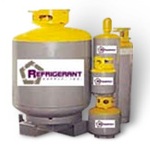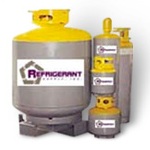 In this insightful article Kevin Grove gives us an inside look at the upcoming ban of R22. According to the article R22 is is a refrigerant used in air conditioning systems and has been banned in new air conditioning systems since 2003. Kevin goes over what steps repair technicians will need to take to re-service air conditioner units that had previously run on R22. Also covered in the article was a recent panel of experts held at the Royal Society of Medicine where issues regarding the ban’s impact on business was discussed by building managers, consultants, architects and business leaders.
In this insightful article Kevin Grove gives us an inside look at the upcoming ban of R22. According to the article R22 is is a refrigerant used in air conditioning systems and has been banned in new air conditioning systems since 2003. Kevin goes over what steps repair technicians will need to take to re-service air conditioner units that had previously run on R22. Also covered in the article was a recent panel of experts held at the Royal Society of Medicine where issues regarding the ban’s impact on business was discussed by building managers, consultants, architects and business leaders.
Information | R-22 Phaseout — The Refrigerant Changes and What It Means for Your Home – http://t.co/38f9AOvHSN #HVAC
— Comfort24-7 (@comfort247) July 18, 2013
More information about the ban of r22 here – http://r-22-refrigerants.blogspot.com/2013/06/counting-down-to-ban-on-r22.html






